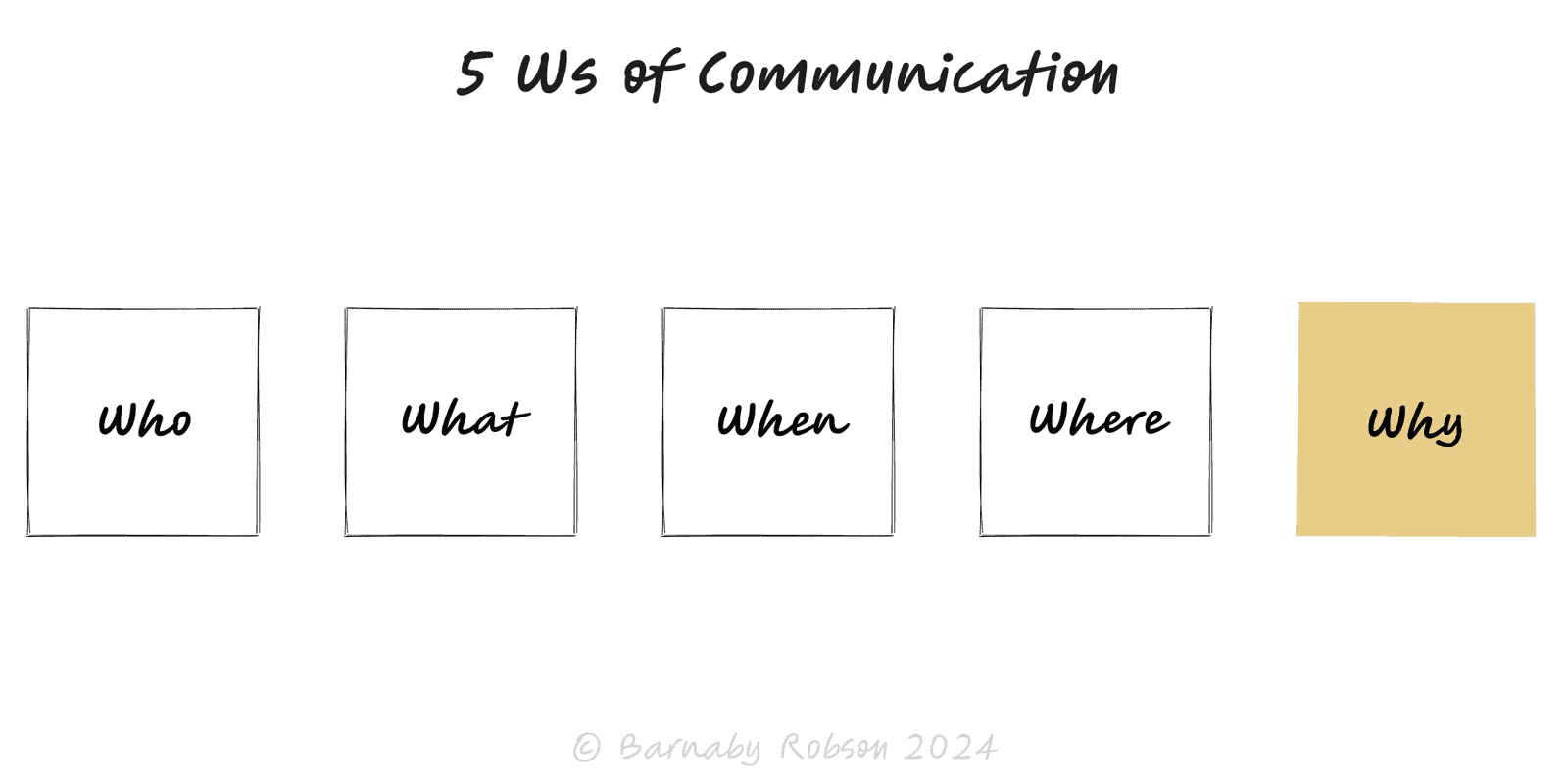5 Ws of Communication
Journalism and classical rhetoric (5W1H tradition)

A compact briefing frame that forces concretes: Who, What, When, Where, Why (and How). Use it to make messages decision-ready and prevent gaps that derail execution.
Who – the owner, stakeholders, affected audiences, and approvers (with single-point ownership).
What – the concrete deliverable or action, including scope boundaries and success criteria.
When – deadlines, cadence, milestones, timeboxes, SLAs; include timezone if relevant.
Where – the location or environment: market, channel, repo, URL, venue, environment (dev/stage/prod).
Why – the reason, objective, or bet; link to a metric or outcome and the decision being accelerated.
How (optional) – the chosen approach, constraints, resources, and key risks/assumptions.
Kick-off briefs for projects, campaigns, or experiments.
Decision memos that need quick approval with minimal back-and-forth.
Handoffs between functions (product ↔ engineering, sales ↔ marketing).
Incident comms and stakeholder updates where speed and clarity matter.
Draft a one-screen brief answering each W in a single, declarative paragraph or bullet.
Make ownership explicit – exactly one DRI (who), with named reviewers and approvers.
Operationalise the Why – tie it to a measurable outcome and the decision it should unlock.
Time-bound the When – include start date, deadline, review cadence, and timezone.
Bound the What – define Done (acceptance criteria) and Not-In-Scope to prevent drift.
Close the loop – attach links (where/how), list open questions, and request a specific decision.
Vague nouns and verbs – “improve”, “ASAP”, “support” create divergent interpretations.
Skipping Why – without the reason and metric, teams optimise the wrong thing.
Hidden constraints – unspoken dependencies surface late; put them in How or Where.
No owner – multiple “owners” means no owner; name one DRI and escalation path.
Order bias – starting with How can lock you into a poor plan; start with Why/What unless it’s an emergency.